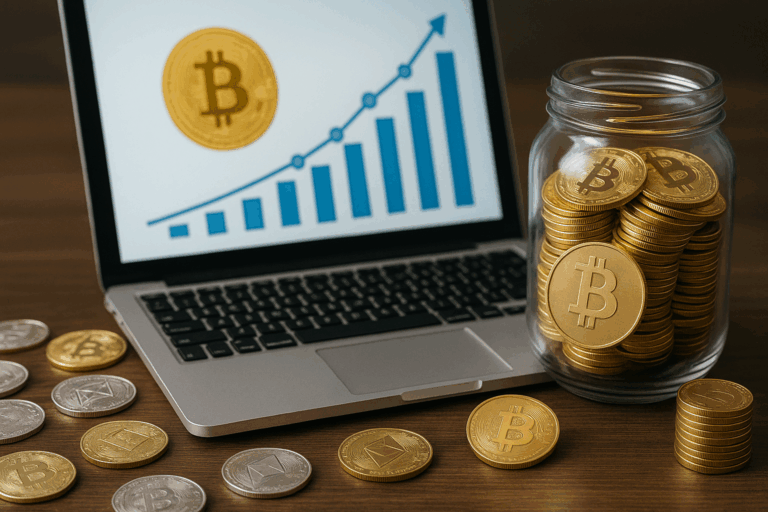Have you decided to buy cryptocurrencies? If the answer is yes, then you are part of a group of people who sees digital currencies as a type of investment that could provide them with a high return.Many investors also choose to trade on a crypto exchange with margin trading to maximize their potential profits and take advantage of market volatility. Your journey starts with searching how to purchase cryptocurrency because there are different ways, regardless of the type of asset you’re interested in. As expected, you will find it easier to buy well-known and established cryptocurrencies like Bitcoin and Ethereum. But this guide will provide you with information about the most popular avenues to add cryptocurrencies to your investment portfolio.
In case you just dipped your toes in the crypto sector, there are some things you should know before learning about preferred purchase methods.
What Is Cryptocurrency?
Let’s start from the assumption that this is the first time you have dedicated some time to truly learn what cryptocurrencies are, and you want to learn how to buy them, but first you need to grasp how they function. In a nutshell, digital currencies are assets you can buy and sell, but also use for other purposes like buying products and services online. They differ from stocks because they don’t give you legal ownership over a company. However, some of them have a long list of utilities, so depending on your interest and needs, you might want to look into a particular project. Digital currencies are labelled as highly volatile assets, so it’s vital for anyone who is interested in the sector to understand the implications of this endeavor.
It’s important to keep in mind that crypto projects are usually susceptible to market manipulation, so if you want a more secure investment, you should maybe look towards registered securities.
Which Cryptocurrency Should You Purchase?
Bitcoin was launched over a decade ago, but since then thousands of other cryptocurrencies have been launched (some of them gained success for a short period and disappeared), so you should establish what you’re looking for in an asset to add to your portfolio, as the market has plenty to offer.
- Bitcoin is the oldest and most famous project in the crypto sector. Since the first Bitcoin block was minted in 2009, the coin has registered a skyrocketing growth in value. The fluctuations in price are something common in the crypto sector, but Bitcoin seems to be more stable than other digital currencies.
- Ethereum is a more advanced project in terms of blockchain technology because it enables the creation of decentralized applications and smart contracts. Ether is the second cryptocurrency by market capitalization, and its price usually follows the same trajectory as Bitcoin.
- Altcoins is a term used to describe all the other projects in the sector that are not Bitcoin. They have different utilities, ambitions, and features. It’s smart to act with caution when investing in one of them.
People’s Preferred Ways To Purchase Crypto
The increased demand for cryptocurrencies has driven to a spike in the number of solutions when it comes to purchase methods, each catering to different preferences and needs. Let’s have a look at the ones that have gained traction lately.
Centralized Exchanges (CEXS)
Perhaps the most common entry point for new investors, centralized exchanges provide a user-friendly environment where people can purchase cryptocurrencies directly using traditional money. These platforms often allow multiple payment methods, such as bank transfers, debit or credit cards, and sometimes even PayPal.
People prefer centralized exchanges because of their convenience, liquidity, and wide range of available tokens. Beginners, in particular, find them appealing since they can easily create an account, verify their identity, and begin trading within minutes. The only drawback is that users must trust the exchange with their funds, which sometimes raises concerns about hacks or sudden platform shutdowns.
Peer-to-Peer (P2P) Platforms
For those who value privacy and flexibility, peer-to-peer platforms such as Paxful or LocalBitcoins remain popular. Here, buyers connect directly with sellers and negotiate terms of payment, which could include bank transfers, digital wallets, or even gift cards. People enjoy P2P platforms because they offer more control and, in many cases, the possibility of avoiding high transaction fees. They also open the door to regions where banking restrictions might make it difficult to use centralized exchanges. The challenge is that they require more diligence from the buyer to avoid scams or fraudulent sellers.
Crypto ATMs
Crypto ATMs have become a popular way to buy cryptocurrency, maybe because people are familiar with traditional ATMs. They are scattered across major cities worldwide and people can use cash or cards to purchase Bitcoin and other coins, however, Bitcoin is the most common option. The process is quick: you simply deposit your money and provide a wallet address to receive the coins. Crypto ATMs are more appealing due to their accessibility and ease of use, especially for people who prefer tangible, in-person transactions.
Payment Apps And Neobanks
Over the last couple of years, payment apps like PayPal, Revolut, and Cash App have entered the crypto space, allowing millions of users to buy digital assets directly from apps they already use for everyday transactions. This has significantly simplified access to crypto, especially for people who don’t want to sign up for specialized trading platforms. People appreciate the convenience of being able to purchase cryptocurrency with just a few taps, without leaving their familiar app environment. Still, these options may come with limitations, such as not being able to transfer coins to an external wallet, which reduces flexibility.
Direct Purchases Through Brokers
Some individuals prefer to skip exchanges altogether and buy crypto directly from brokerage services. Platforms let users invest in cryptocurrencies alongside traditional assets like stocks. This “all-in-one” approach appeals to investors who want to diversify their portfolio within a single platform. This method is particularly popular among casual investors who see crypto as part of a broader financial strategy rather than a standalone venture. The trade-off, however, is that some brokers may only allow trading “contracts” instead of actual crypto ownership, meaning users can’t always withdraw coins to their own wallets.
Traditional Bank Integrations
As banks and financial institutions slowly adapt to digital currencies, some now offer crypto-related services directly. This is especially true in countries with progressive financial regulations. Buying crypto through banks gives users a sense of legitimacy and trust, as it feels more regulated than other options. While still limited compared to exchanges, this option is gaining ground and may become one of the most favored ways to purchase crypto in the future.
Final Thoughts
The landscape of cryptocurrency purchasing continues to evolve, shaped by technology, regulation, and user demand. Centralized exchanges remain the go-to method for most buyers due to their convenience and liquidity, but alternatives such as peer-to-peer platforms, ATMs, payment apps, and brokers each serve unique needs.





